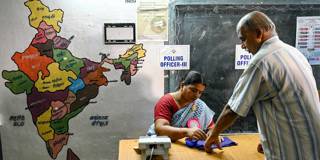India’s ruling Bharatiya Janata Party sailed through the last general election in 2019, winning every parliamentary seat in six states, all but one seat in three states, and all but two seats in two states. This time, however, the ship appears to be riddled with leaks and at risk of sinking.
NEW DELHI – As India’s general election enters its second month, most conventional expectations have already been upended. Complacent pundits had long ago concluded that Prime Minister Narendra Modi and his Bharatiya Janata Party (BJP) would win comfortably. But two phases in to the seven-phase election – with some 190 constituencies having already cast their votes – the situation no longer looks quite that simple.
India’s autonomous Election Commission prohibits the publication of any exit polls until all seven phases of voting have concluded. (That will happen on June 1, with the result announced on June 4). But unofficial readings of voter sentiment strongly indicate that things are not going the BJP’s way. The public, it seems, has simply not been given enough reason to vote for the party a third time.
Those who put Modi in office in 2014 hoping that he would fulfill his promise to spur job creation have no reason to vote for him again. Unemployment rose significantly under his leadership, and though it appears to have fallen more recently, there is good reason to believe that the real unemployment rate is much higher than official figures indicate. Moreover, a staggering 80% of Indians have seen their incomes decline since 2014, and both purchasing power and household savings have collapsed. Many blame the government for not adequately protecting their welfare.

NEW DELHI – As India’s general election enters its second month, most conventional expectations have already been upended. Complacent pundits had long ago concluded that Prime Minister Narendra Modi and his Bharatiya Janata Party (BJP) would win comfortably. But two phases in to the seven-phase election – with some 190 constituencies having already cast their votes – the situation no longer looks quite that simple.
India’s autonomous Election Commission prohibits the publication of any exit polls until all seven phases of voting have concluded. (That will happen on June 1, with the result announced on June 4). But unofficial readings of voter sentiment strongly indicate that things are not going the BJP’s way. The public, it seems, has simply not been given enough reason to vote for the party a third time.
Those who put Modi in office in 2014 hoping that he would fulfill his promise to spur job creation have no reason to vote for him again. Unemployment rose significantly under his leadership, and though it appears to have fallen more recently, there is good reason to believe that the real unemployment rate is much higher than official figures indicate. Moreover, a staggering 80% of Indians have seen their incomes decline since 2014, and both purchasing power and household savings have collapsed. Many blame the government for not adequately protecting their welfare.